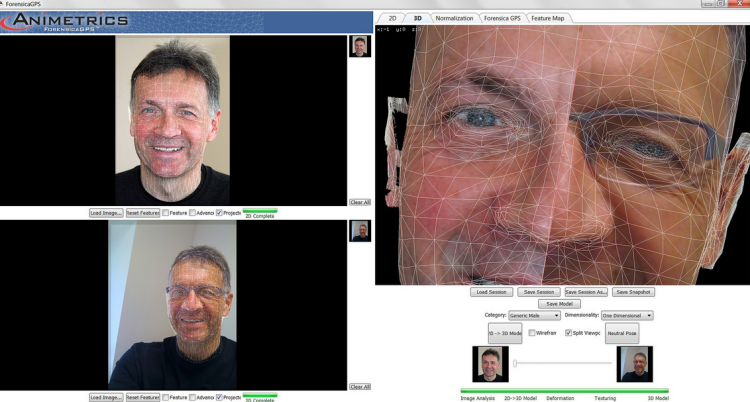We are now in the age of face-recognition-as-a-service. That’s the word from the CEO of a facial recognition company that is now licensing an API for its military-grade face recognition.
Paul Schuepp, head of New Hampshire-based Animetrics, told VentureBeat that his company’s FaceR API converts a 2D image – even a low-res one in a photo or video from a smartphone — into a 3D model for more accurate identification. Once it’s in 3D, the face can then be processed by the FaceR Identity Management System (FIMS).
The software is currently being used the U.S. military and law enforcement around the world for identity verification, surveillance, and criminal identification.
Animetrics’ API is only the latest – and one of most industrial-grade – to offer facial recognition as an option for virtually any software. There are at least five dozen other facial recognition APIs out there.
Scheupp pointed out there are three main steps to identifying a face. The software first “detects that it’s a face and not a light switch,” he said, “and then it processes by turning the pixels into a biometric template,” he said. Creating a 3D model helps to compensate for such issues as lighting or partial obstruction.
“But facial recognition is only half the battle,” Schuepp pointed out. “The other half is the database [for matching], which can be created from scratch [or you can use an existing one.]” His company’s API, Schuepp noted, generally “supplies an empty database.”
And this is where the future of facial-recognition-as-a-service lies — or not.
“What’s going to invade your privacy is how the database is assembled and released,” Schuepp said, adding that he counts himself among those who “have been fairly active in the privacy issues.” The issue is not the front-end tech, he said. It is about the back-end and who is controlling it, just as it is with Social Security numbers and drivers’ licenses.
Of course, you could assemble your own database of faces of everyone you know, or there might be crowd-sourced assemblages. Either way, expect facial recognition of some sort to become as common as voice recognition.


